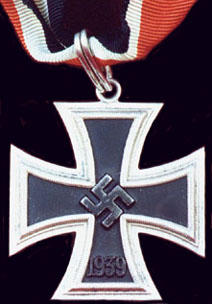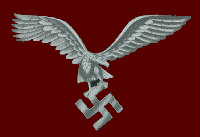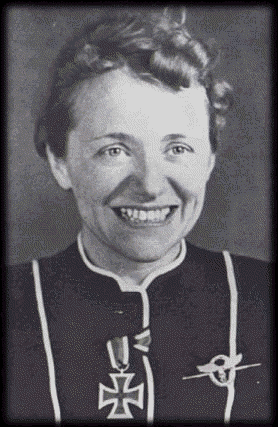|
|
|
 |
 |
Galland's Luftwaffe |
 |
 |
![]()
 |
Part Two Of The
Flug Kapitan
| The second prototype, V2, not
only had a redesigned tail but was also fitted with dive-brakes.
The bomber was delivered to the Erprobungsstelle at
Rechlin near Berlin, for evaluation in march 1936. The
coincidence of the dates is interesting for, as dive-brakes
were being fitted to the Stuka, Hanna Reitsch was about
to test fly a glider also fitted with them. The glider
which was to be the testbed for the air brakes was a
Schweyer Rhonsperber. The brakes consisted of two
manually operated vertical slats or spoilers above and
below each wing. On the initial test flight, the glider
was aero-towed to 13000 ft and then cast off a d trimmed
into a gentle descent at moderate speed.
She therefore retracted them and the shudding ceased. After noting speeds and altitude on her knee pad, she once again put her glider into a dive, slightly steeper this time, and the brakes opened. Immediatly the aircraft was subjested to strong vibration again and the control column was wrested from Hanna's hands. After the brakes were closed and control restored, Hanna landed and reported her findings. Hans Jacobs decided to reduce the area of the brakes bt fretting a number of holes in them. The test flights continued, with slowly improved results, until after a number of weeks the ideal number and shape of holes and slots seemed to have been achieved. The final was to be a vertical dive to ascertain if the air-brakes could contain the speed of the glider within the structural limitations. For the final test, at the end of a long aero-tow to 17,000 ft, Hanna cast off, deployed the brakes and slowly increased the angle of dive. As the speed increased, a slight wing flutter developed; if the speed increased further, the possibility of the flutter quickly develpoing to catastrophic proportions certinly existed. The temptation to abandon was strong but she pushed the stick forward and, as the speed built up, the flutter ceased. Even with the glider was vertical, the dive-brakes held the airspeed to 125 m.p.h., well within the ariframe's Vne with the glider flying, as Hanna reported, steady as a board". At 600 ft the aircraft was pulled out of the dive, the brakes were retracted and a safe landing was made, with all the DFS staff, including Hans Jacobs, running across the airfield to congratulate the test pilot. Shortly afterwards, the Generalleutnant Ritter von Greim, Udet and other high ranking officers of the Luftwaffe assembled at Darmstadt-Griesheim for a demonstration of the dive-brakes, with the glider flown by Hanna. After the test flights Udet conferred on Hanna the honorary title of Flug -Kapitan" : she was the first woman pilot to be so honoured, and it was a distinction of which she was immensely proud. she insisted on its use for the remainder of her life. |
 |